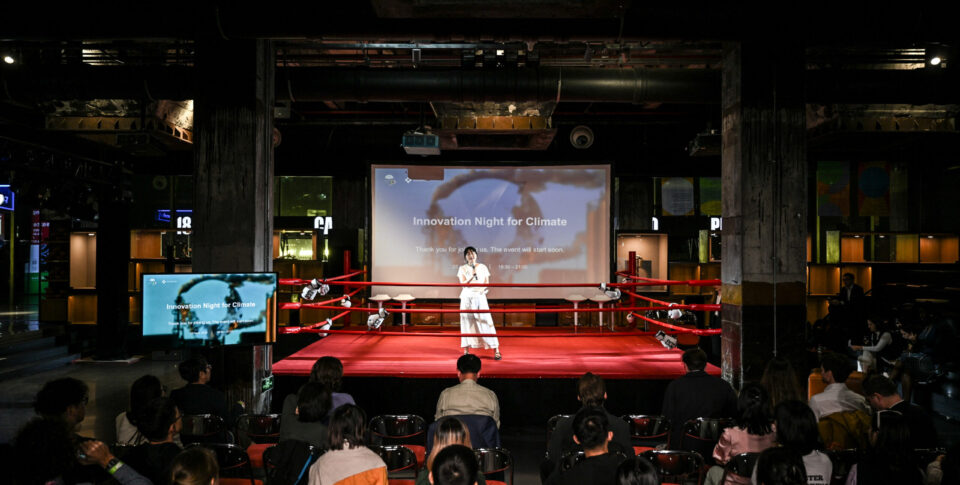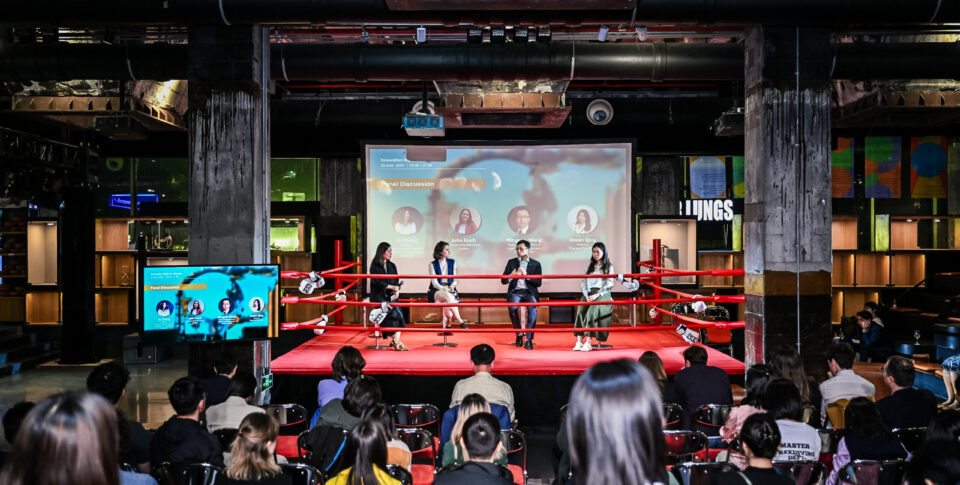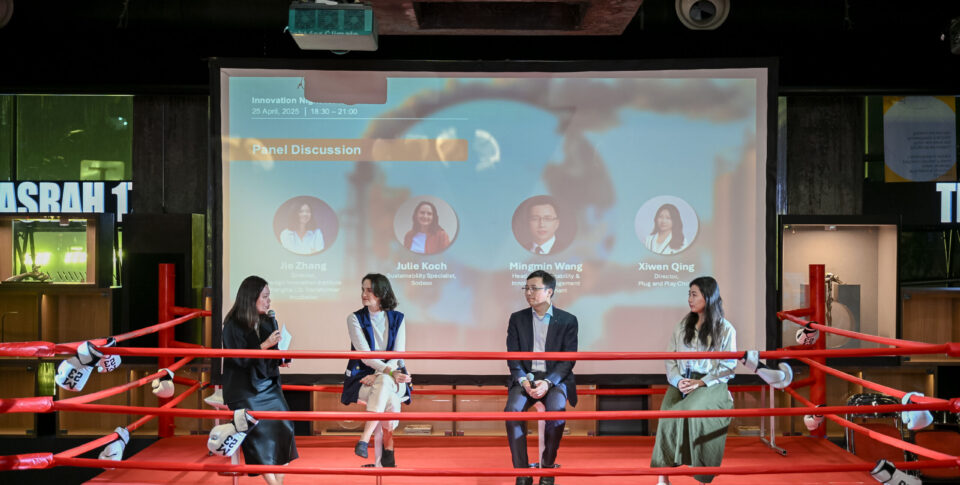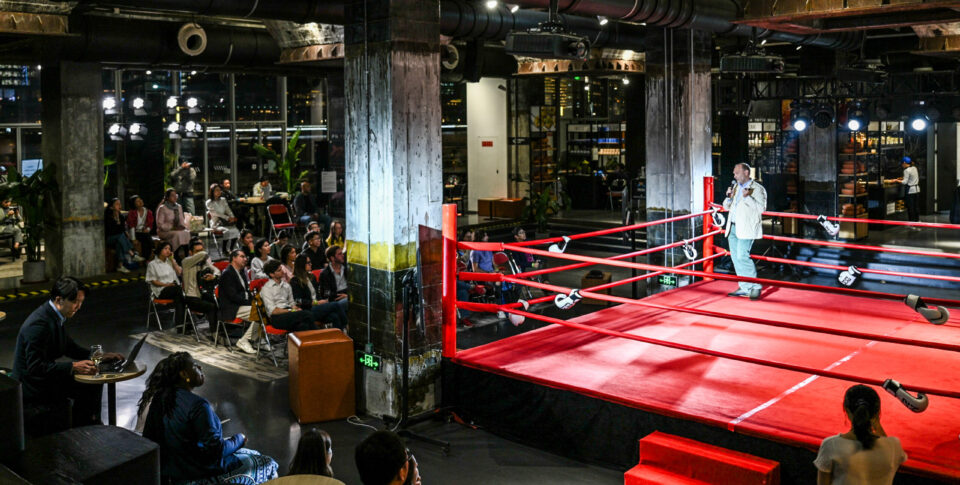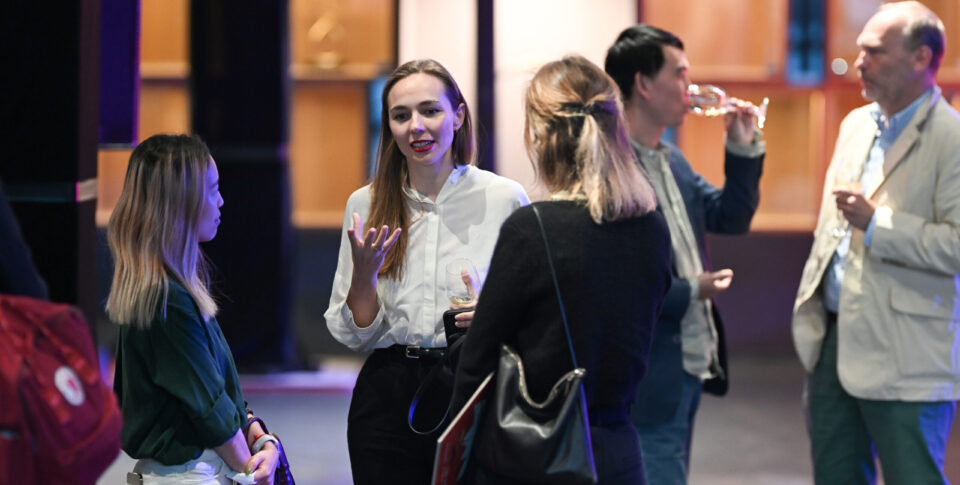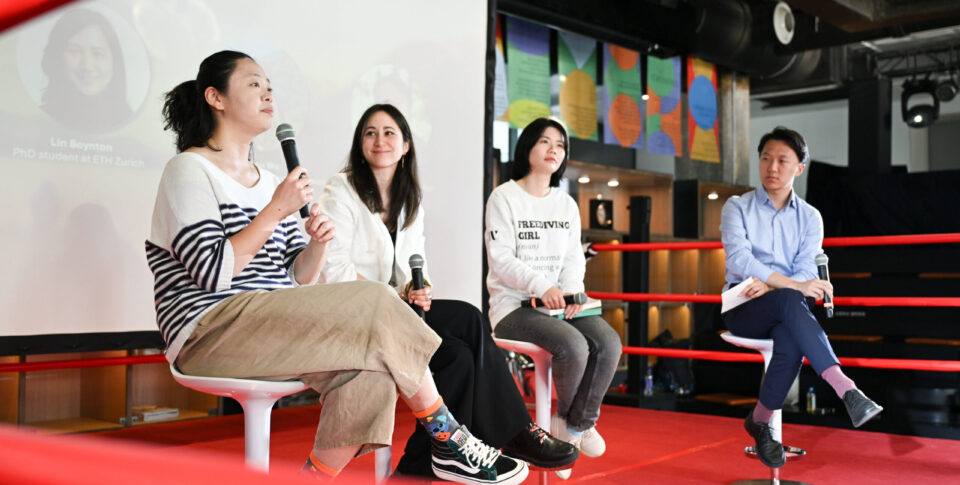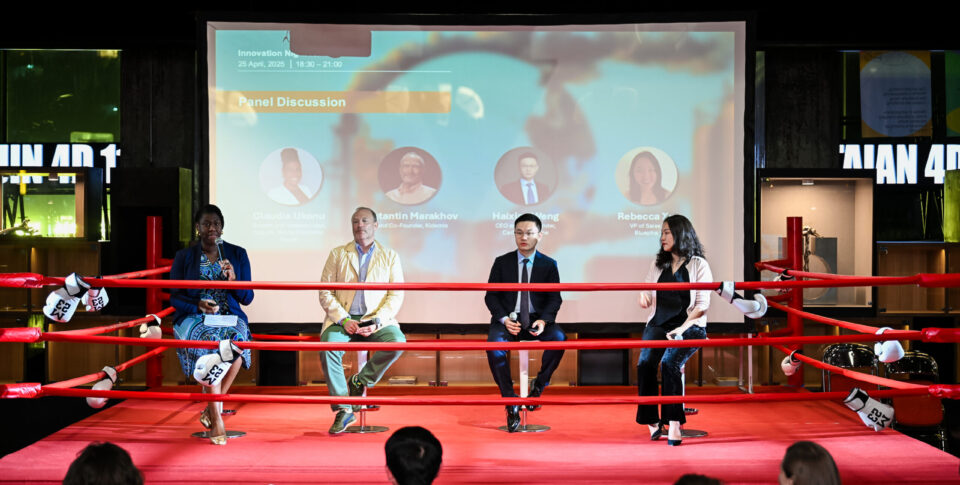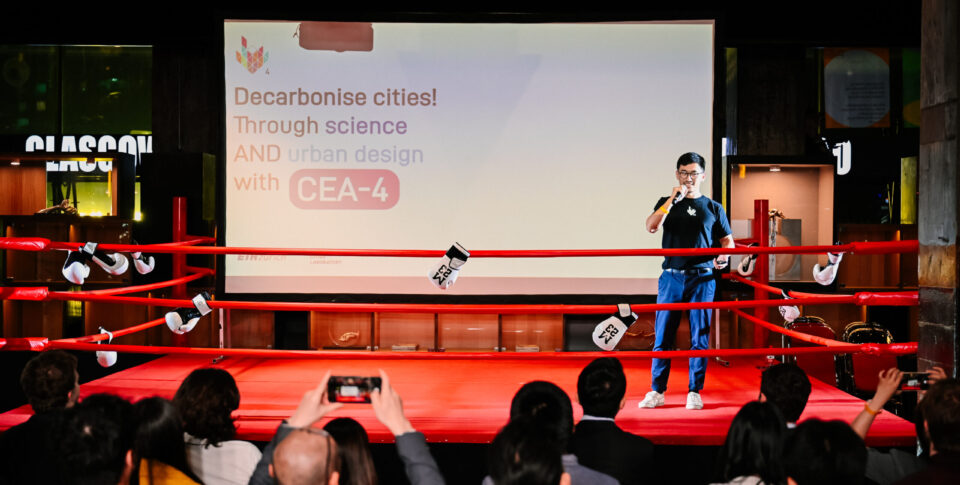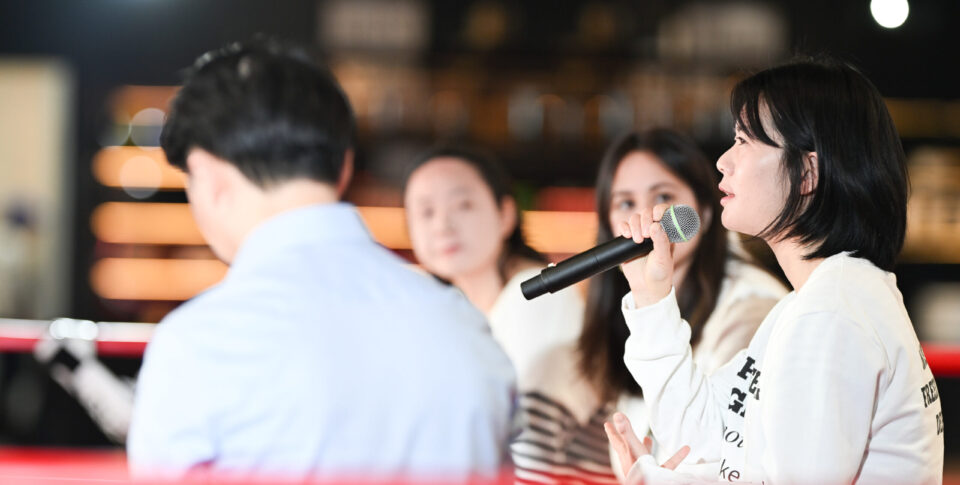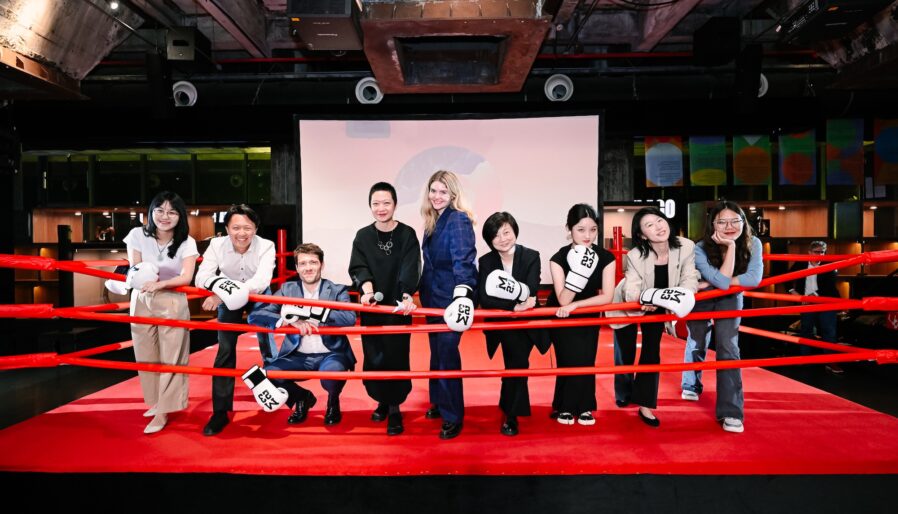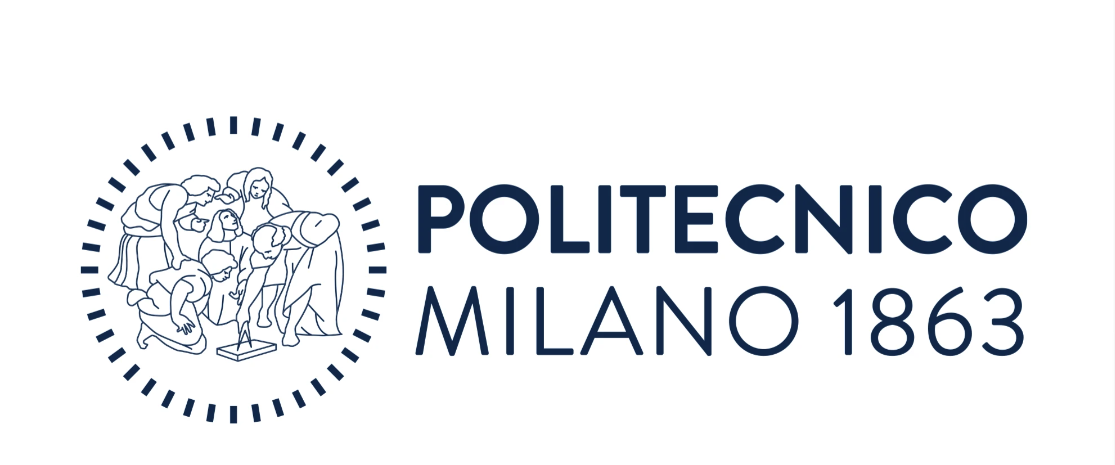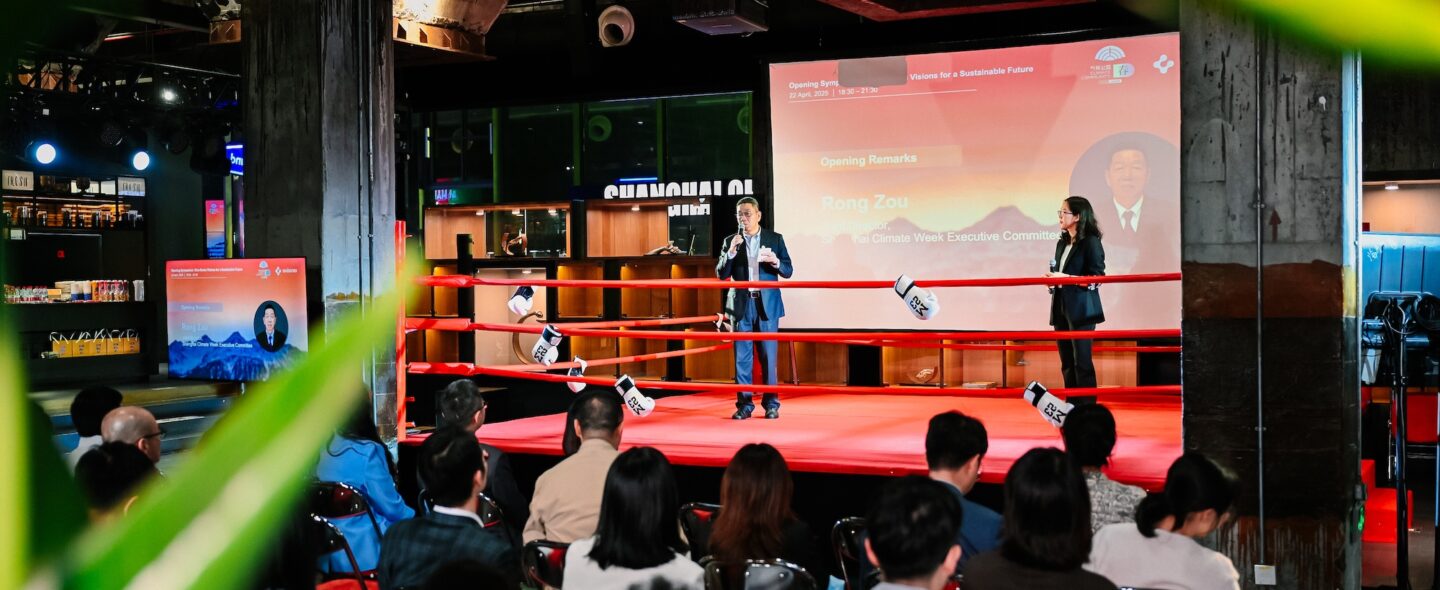
Just a few weeks ago, the President of COP30 called climate change “the fight of our century.” Climate change is not only a crisis, it’s a defining fight for our collective future. The boxing ring became a powerful symbol for this fight, a space where ideas are tested and where collaboration, not confrontation, is key.
The Climate Ring Shanghai was designed to connect Swiss and Chinese voices from various fields, including science, law, urban design, art, and psychology, to tackle this crucial challenge collaboratively. Topics discussed ranged from forecasting tools and emotional engagement to glacier architecture and international law. “This gathering underscored the importance of integrating diverse disciplines in our collective efforts against climate change” said Philippe Roesle, CEO of Swissnex in China and Consul. Our motto: Step into the ring. Join the fight against Climate Change.
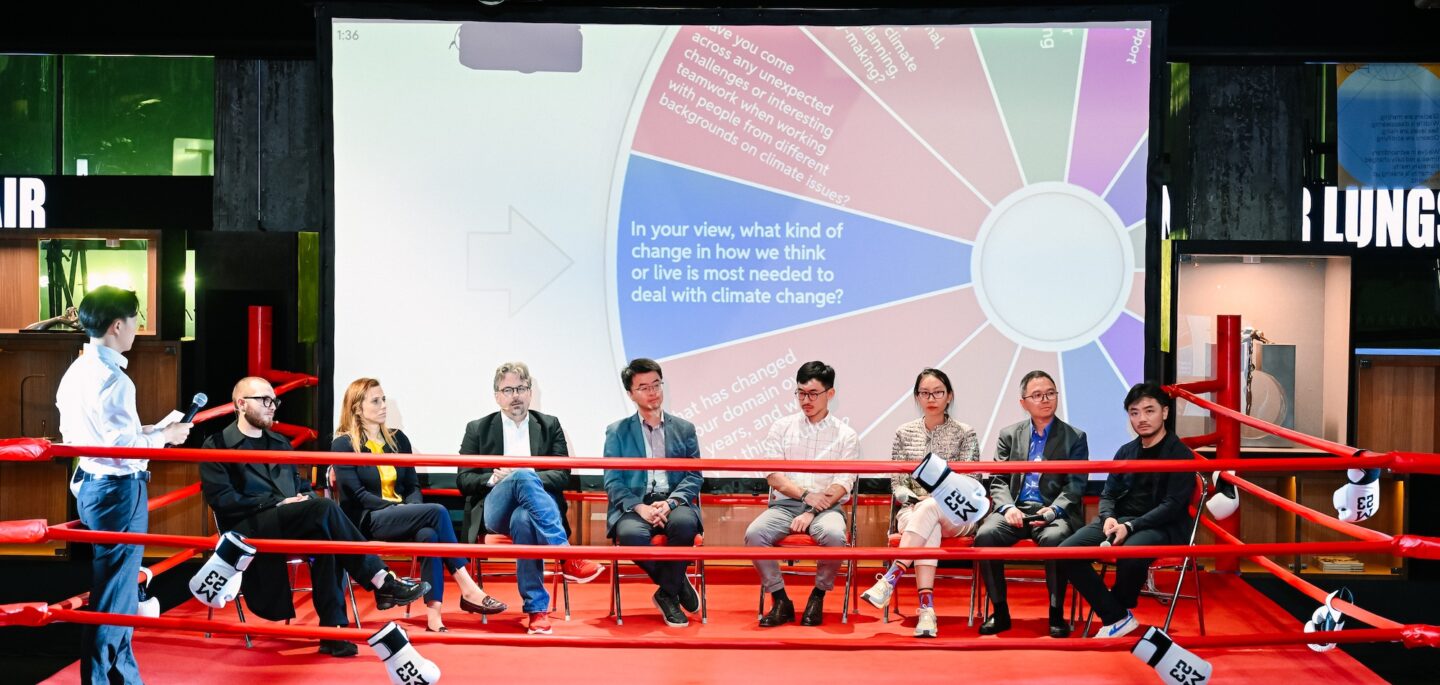
We kicked off Climate Ring Shanghai by diving straight into the heart of the topic with a panel of speakers from various disciplines.
The Opening Ceremony
The Opening offered a wide-ranging and interdisciplinary lens on climate change. We first learned from Professor Tobias Brosch from University of Geneva that our emotions regarding climate change directly influence our responses to it. Feelings such as anxiety can leave us feeling paralyzed. Often, our decisions are based on perceived truths rather than actual facts, and understanding this cognitive gap is essential for designing more effective climate communication and policy.
Next, we turned our attention to the earth beneath our feet with a presentation from Professor Zimeng Wang from the Department of Environmental Science and Engineering at Fudan University. Soil, often overlooked, plays a crucial role in both storing carbon and sustaining ecosystems. Protecting soil means protecting one of our strongest natural allies in the fight against climate change.
Frontiers represented by Christy Wang then announced China’s 2025 National Champion for the Frontiers Planet Prize: Professor Xing Yuan, recognized for his work in climate prediction. His research enhances our ability to forecast extreme weather events with greater accuracy, providing vital tools for preparing cities and communities for what lies ahead.
We then focused on the built environment with the introduction of the CEA-4 product by Dr. Zhongming Shi from ETH Zurich. A tool that addresses aspects from energy demand to system efficiency, bridging the gap between urban design and climate goals. Building on this, Yin Li, the architect lead of the Sino-Swiss Zero Emission Building Project presented their work on developing technical standards for zero-carbon buildings in China. Through pilot projects in various climate zones, the team is helping to shape national roadmaps for sustainable construction, drawing on Swiss expertise in both technology and policy.
We also examined climate issues from a legal perspective. Professor Elena Cima from the University of Geneva discussed the challenges of governing climate change through international law. She emphasized that legal frameworks alone are insufficient; we also need interdisciplinary cooperation and grassroots initiatives to create long-lasting, scalable impact.
To conclude the evening, artist Khalil Berro introduced his piece “BREATHE,” a data-driven installation that poses a simple yet powerful question: Where does the air we breathe come from? Utilizing real-time atmospheric data from ETH Zurich, the installation delineates the air’s journey, complete with city names and timestamps projected onto multiple facades across the globe. On display during Climate Ring Shanghai at the Modern Art Museum, it invites viewers to reflect on air as a common good and reminds us of our shared responsibility.
Building Smarter, Lower-Carbon Cities
As cities account for over 70% of global CO₂ emissions, it’s clear that the built environment is a key battleground in the climate fight. On the second day, Dr. Zhongming Shi from ETH Zürich officially launched CEA-4, an open-source tool empowering urban designers to model and simulate decarbonized cities. The tool, part of the City Energy Analyst platform, bridges architecture and energy systems engineering, enabling more informed planning for low-carbon infrastructure. A roundtable followed, gathering urban design experts to discuss the challenges of such tools in practice and how open-source collaboration could shape smarter cities across geographies.
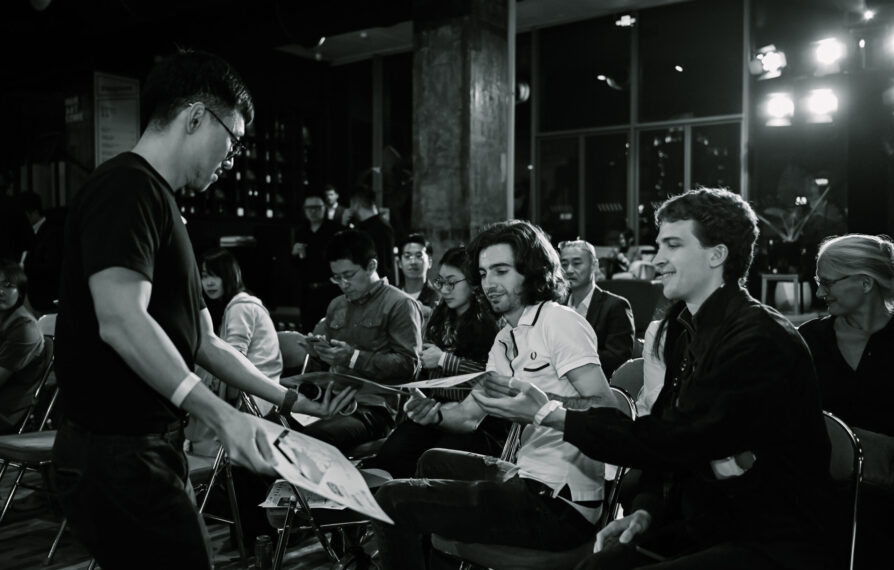
Speed-pitching for climate change
In a PechaKucha-style night organized with SwissCham China, TEEC, and PechaKucha Shanghai, seven speakers each had 6 minutes and 40 seconds to present 20 slides on sustainability and innovation. From AI-powered design solutions to energy transformations in industrial processes, the format offered clarity to ideas that often get lost in complexity. The evening showcased not just new technologies, but the creative thinking behind them reminding us that the climate crisis demands more than data, it requires imagination.
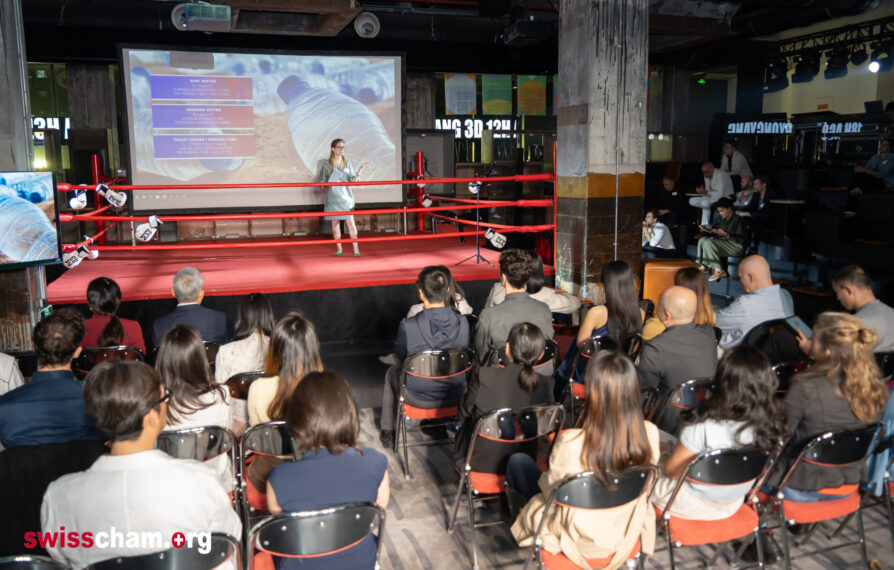
Young Voices
Day four opened with a dose of honesty and passion from young voices in academia, NGOs and civil society tackling the climate crisis. In this panel, participants spoke about the burden of perfection, the need to stay grounded in climate realities, and the role of education in turning awareness into action.
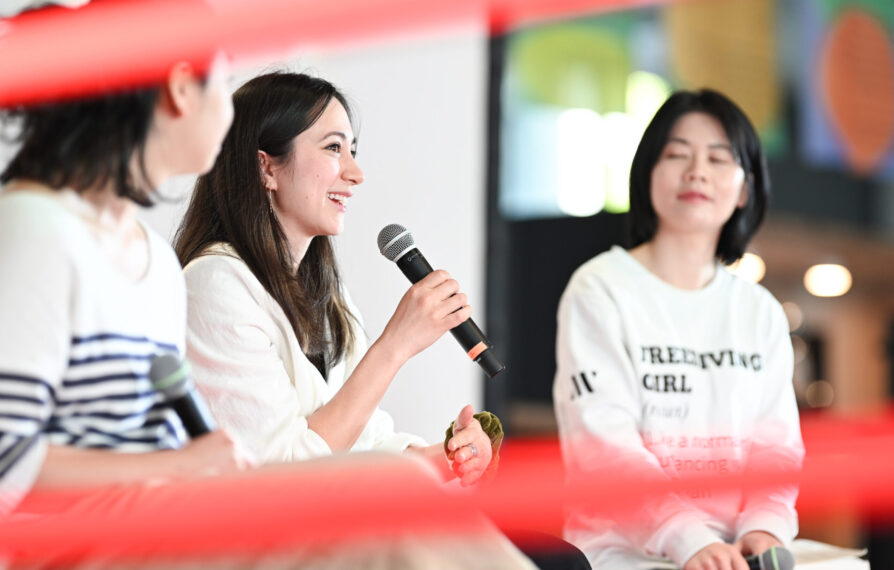
Innovation Night
Later that evening, Innovation Night brought together startups, corporates, and investors. Swiss startup Kidemis who was in China for the Startup Camp powered by Innosuisse and managed by Swissnex and other companies showcased their climate solutions, while two lively panels explored how different players are adapting.
The first panel discussed how large corporations are integrating sustainability into their strategies while balancing the tension between short-term goals and long-term commitments. The second panel focused on startups and unicorns, highlighting a fast-moving and diverse landscape. These young companies are offering innovative solutions to the climate crisis while also navigating the tough realities of scaling and competing in the market.
Behavior, Systems, and the Power of Perception
How do people really make climate decisions? A behavioral insights session explored just that. Participants learned how psychological blind spots, like overestimating small personal actions or conforming to perceived social norms can hinder real impact. Understanding these patterns can help reframe climate messaging and policy to align with how people actually think and act.
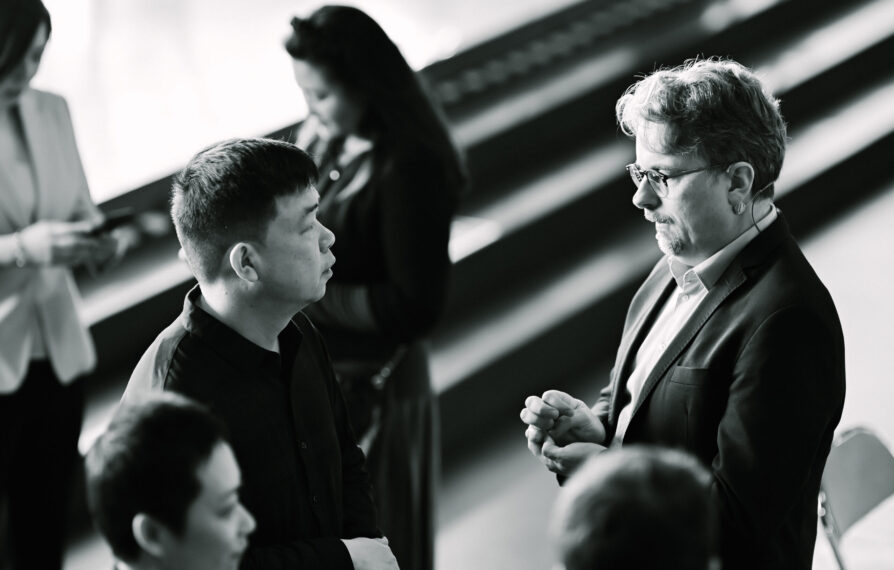
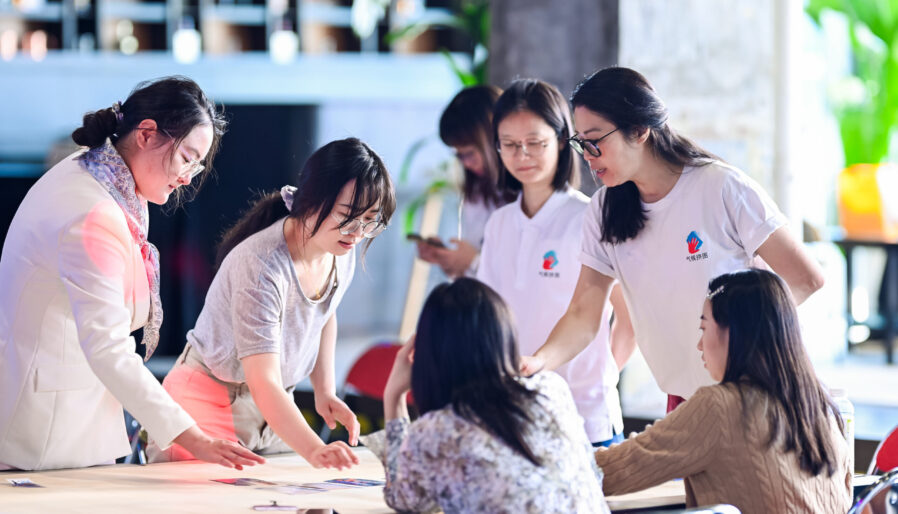

The Climate Fresk workshop, turned the abstract science of climate systems into a participatory, visual journey through cause and effect. The workshop brought together children and adolescents, engaging them through this interactive activity. It brought home the message that climate change isn’t a series of isolated events, but a deeply interconnected system that we are all part of.
The Air We Share
As the week ended, the conversation turned to the air, one of our most intimate connections with the planet. A cross-disciplinary panel explored the science and symbolism of air, clouds, and climate. Then followed a powerful ending: Clouds’ Memoir, a multimedia poetic performance by the Black Void art collective. Narrated through the voice of a cloud, the piece reflected on transience, memory, and our shared atmosphere, turning climate data into emotion, and science into story.
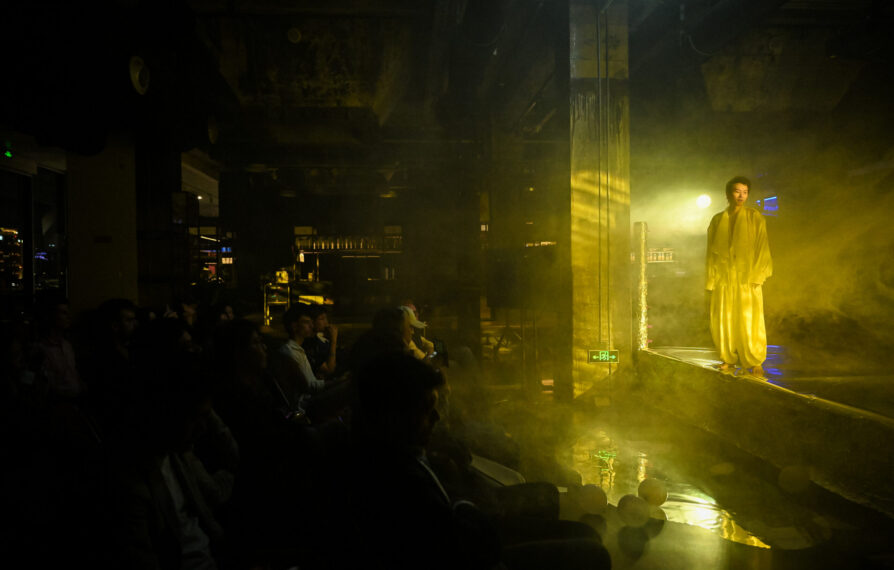
Art exhibition
In addition to the events three thought-provoking artworks were presented during Climate Ring Shanghai; BREATHE, Twin Cloud, and Apocalyptic Optimists were showcased in the same venue, inviting visitors to reflect on our deep entanglement with the planet. Through air, data, and visual symbolism, these pieces offered a poetic and powerful lens on climate, connection, and shared responsibility.
Find more info about the art exhibits here.
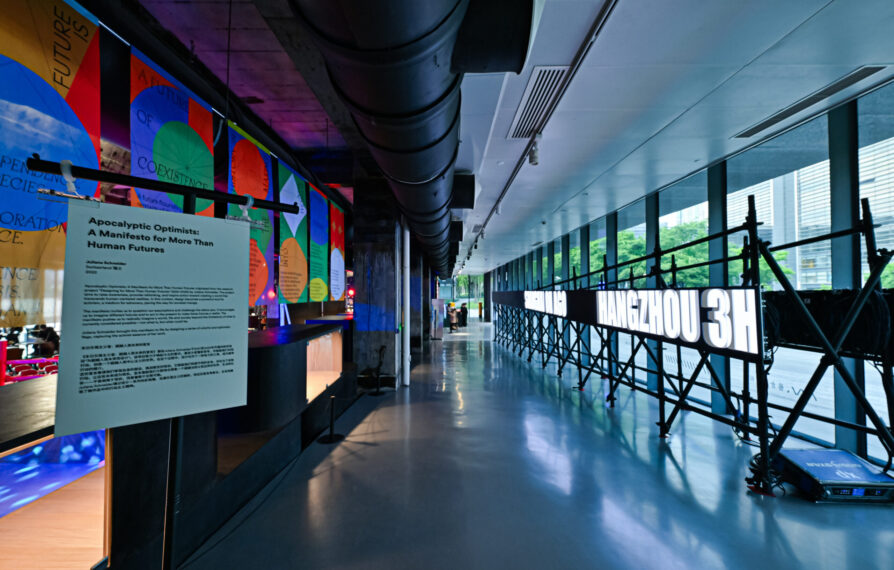
Drawing from Swiss and Chinese perspectives
For Swissnex in China, participating in Climate Ring Shanghai was a chance to connect Swiss and Chinese stakeholders around planetary challenges that transcend borders. The conversations emerging in China, around prediction, participation, and interdisciplinary collaboration, echo global trends, while offering a distinctive perspective shaped by China’s scale, ambition, and cultural context.
During Climate Ring Shanghai, three Swiss researchers were in China for a short-term sabbatical. In addition to joining the ring, they visited their peers and taught some classes.
What’s Next?
Climate Ring Shanghai offered more than a series of events, it became a space for interdisciplinary dialogue, rooted in a shared urgency to act. “Every voice contributed to a richer understanding of the challenges ahead and the possibilities we can shape together” said Cissy Sun, Head of Academia and Arts at Swissnex in China. As we move forward, the connections formed here, in the ring and beyond, will serve as vital links in building a more climate conscious future.
-
![]()
Recap video
Supported by
A special thanks to our funding partners
